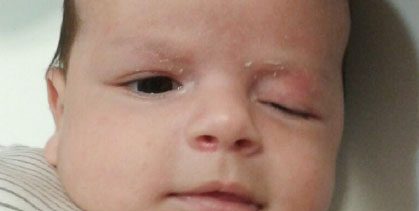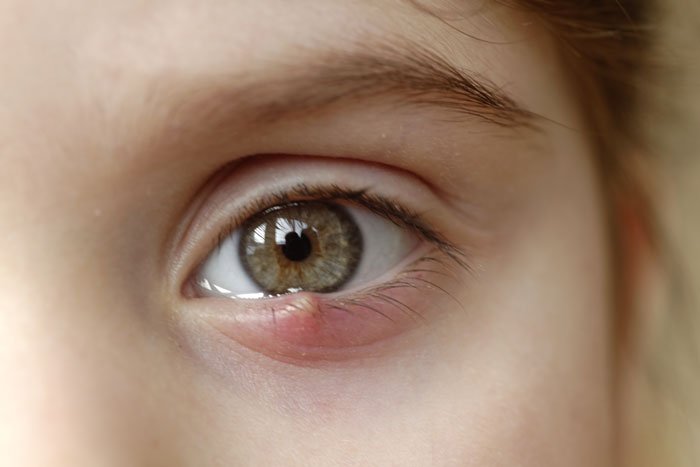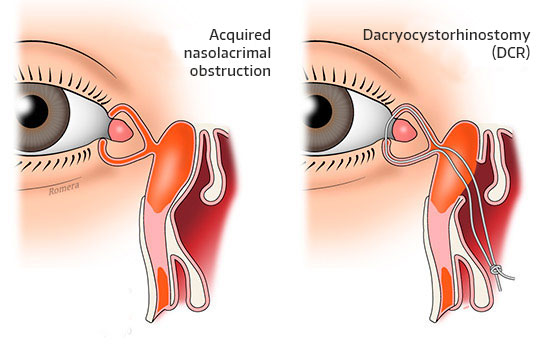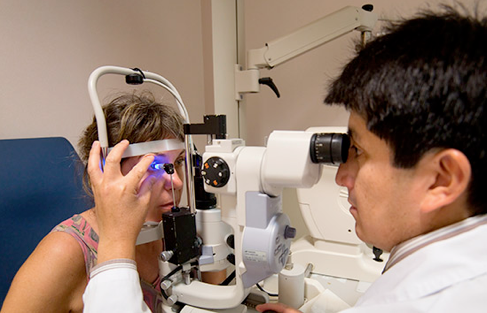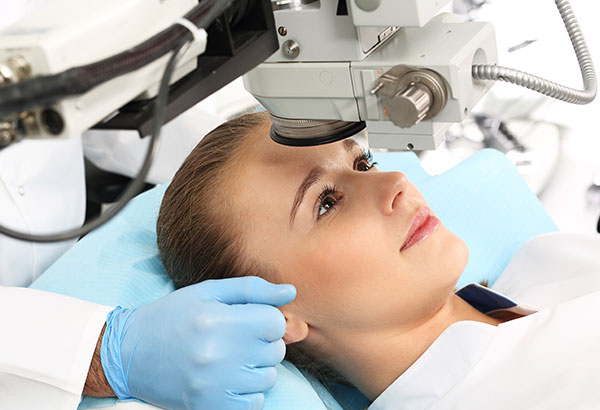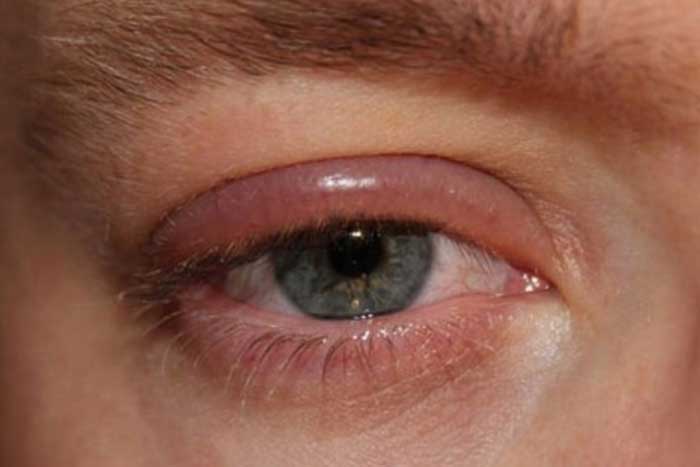Eyelids, Orbit and Tear Duct
What are they?
An ophthalmologist who specialises in eyelids and tear ducts is responsible for preventing and treating diseases for these parts of the eye, which are closely linked to the eyeball.
The eyelids are the folds of skin that cover the eyes completely when they are closed. Their function is to protect the eye and to lubricate it by secreting tears.
The orbit is made up of the bony cavity and tissues that house the eye.
The tear ducts are the system that drain tears after lubricating the eye.

Diagram of the tear ducts.
Eyelid conditions
Ptosis: Drooping eyelids. This condition usually has a neurological cause, or is due to an alteration in the eyelid structure. Ptosis is not usually more than an aesthetic problem, but the eyelids can sometimes cover the eye, in which case it can cause a lazy eye in children.
Blepharitis: Inflammation or infection of the eyelids. This can also be a chronic condition. It is a benign condition that may lead to irritating symptoms, such as reddening, dry eyes, itchiness or stinging.
Stye and eyelid cyst: A stye is a lump on the eyelid that is secondary to a bacterial infection, usually staphylococcal, related to a gland inside the eyelid. It is painful and can be recurrent. The stye may turn into an eyelid cyst, which is painless and hard.
Eyelid malpositions. There are two types of eyelid malpositions: ectropion, abnormally open eyelids that cause tears, and entropion, eyelids that fold inward, causing the eyelashes to rub against the eye. These are common with advanced age, although they can also be caused by an injury or other conditions.
Warty and carcinomatous lesions. This means the appearance of lumps on the eyelids or surrounding areas, which may be benign tumours (with no danger for the patient) such as warts, or malignant ones, such as carcinomas.
Orbital conditions
Thyroid ophthalmopathy: Associated with thyroid disease, in which the soft tissues of the orbit are swollen and push the eye out, giving the appearance of “frightened eyes”.
Preseptal cellulitis: An inflammatory disease of the tissues under the eyelid and in the anterior part of the orbit. They tend to be sharp and painful.
Orbital cellulitis. In addition to being painful, this condition has further symptoms that include fever, ocular motility problems and vision problems.
Tear duct conditions
Epiphora secondary to tear duct obstruction. When the tear film evacuation duct is obstructed, the tears drain down the face (epiphora). There are two types:
- Congenital (from birth), caused by the baby’s eyelids failing to form properly.
- Acquired, usually caused by a build-up of waste material over the years, although it may also be caused by cysts in the tear duct. This condition causes tears and corresponding blurred vision. If it appears acutely and painfully, it is due to an infection in the nasolacrimal ducts called acute dacryocystitis.
Evaluation
Slit lamp: Binocular microscope with different magnification settings and lighting.
Jones test: This test examines lacrimal drainage by dyeing tears with fluorescein.
Exophthalmometer: This tool measures the position of the eye in terms of the lateral orbital rim. That is to say, it measures how much the eyes “bulge”.
Sometimes external tests are required, such as: Orbital magnetic resonance imaging, orbital radiography, cranial CT scans, and so on.
OTHER SPECIALITIES
Clinical treatment
Blepharitis: Treatment involves a combination of cleaning the edge of the eyelids with special wipes and artificial tears. Sometimes, anti-inflammatories or antibiotics are also prescribed.
Styes and eyelid cysts: The stye is treated with locally applied heat, cleaning the area and the use of antibiotic and anti-inflammatory eye drops. An eyelid cyst requires surgery, especially if it presses against the cornea (as it can change the cornea’s shape).
Palpebral ptosis (obstructing vision). Cases where the patient’s eye is obstructed require eyelid-lifting surgery.
Ectropion and entropion: In both cases if the condition is pronounced then surgery will be required to correct the eyelid closure.
Epiphora: This means tearing secondary to tear duct obstruction is treated depending on its type:
-
- If it is congenital, the area will first be massaged until the tear duct is open. If that is not possible, then there are different surgery options.
- Acute dacryocystitis requires antibiotics to treat the infection and surgery depending on the cause and degree of obstruction.
Warty and carcinomatous lesions. These require surgical extirpation, especially in the case of malignant lesions.
Thyroid ophthalmopathy depends on keeping the underlying disease under control, but nonetheless this does not guarantee better results.
Preseptal cellulitis requires treatment of the infection, as does orbital cellulitis, but in the case of the latter surgery may be required.
Related entries
What is blepharitis?
Blepharitis is inflammation or an infection of the eyelids. It can happen occasionally or be a chronic condition and can…

